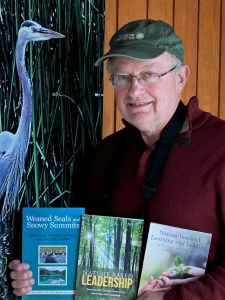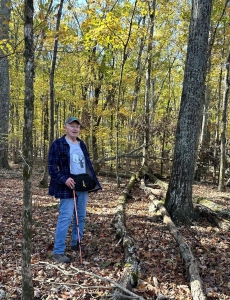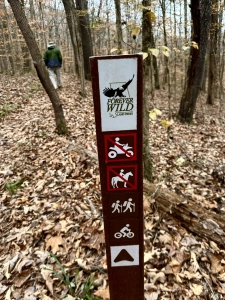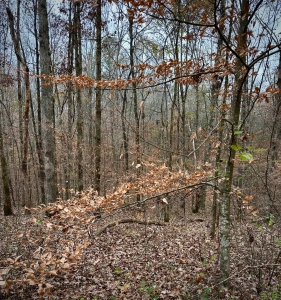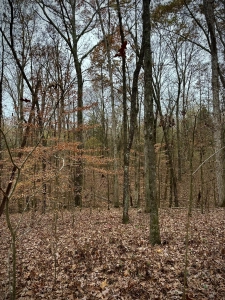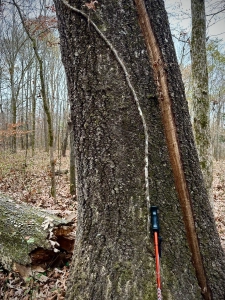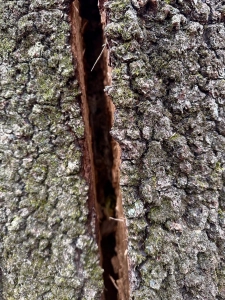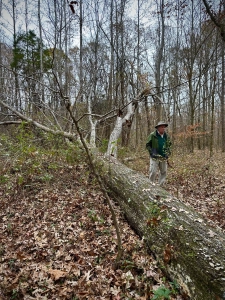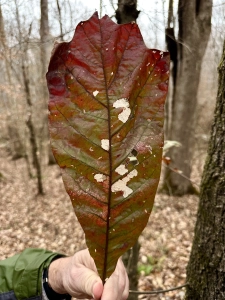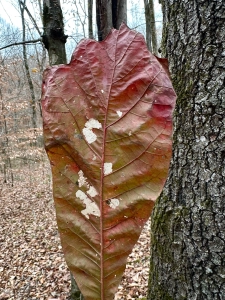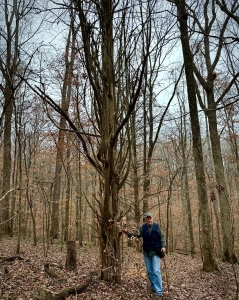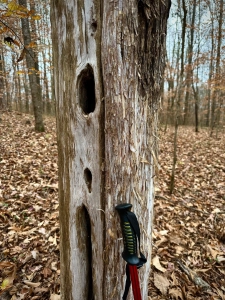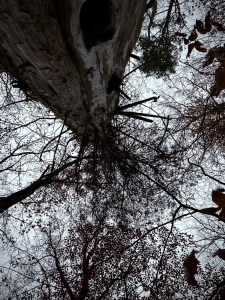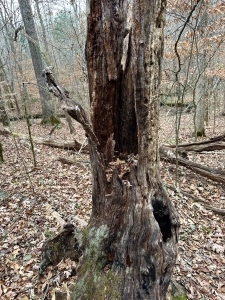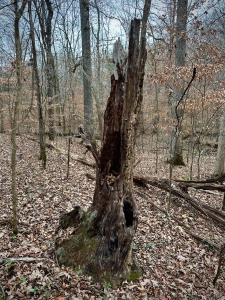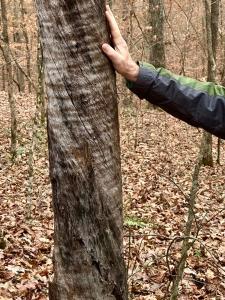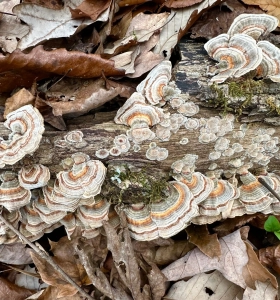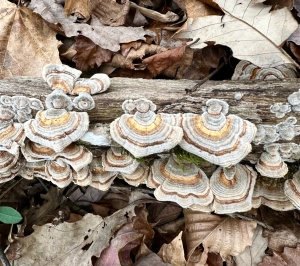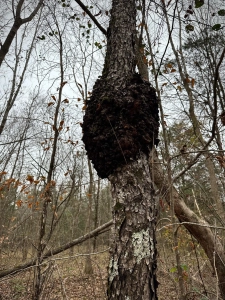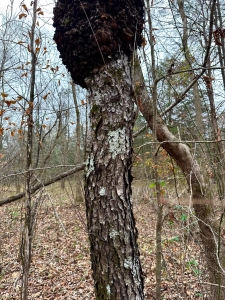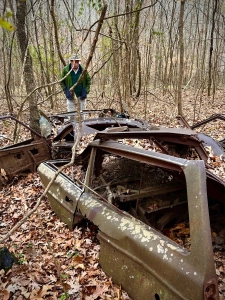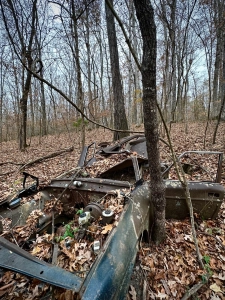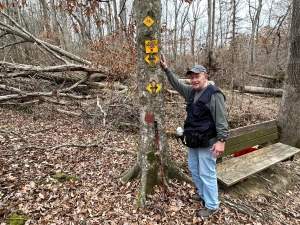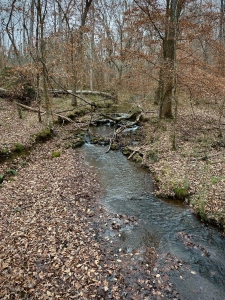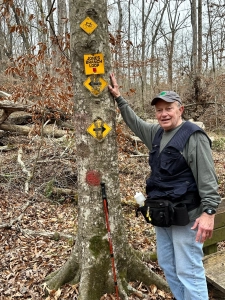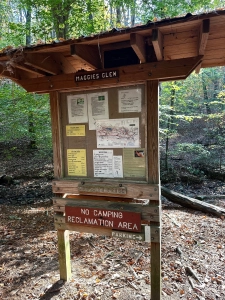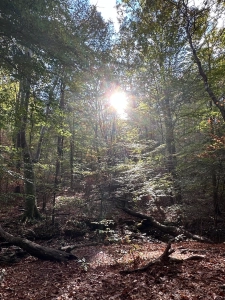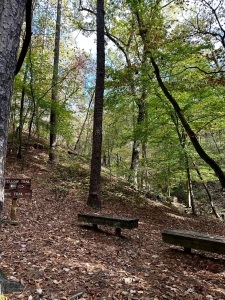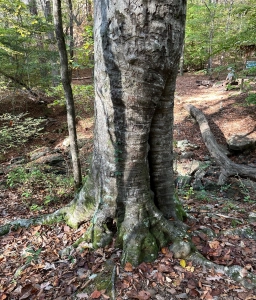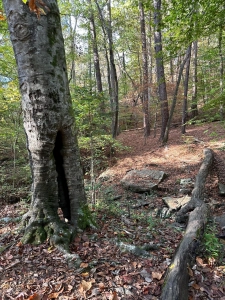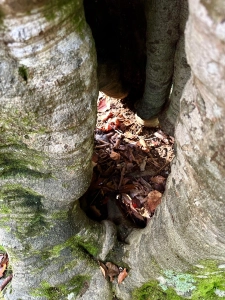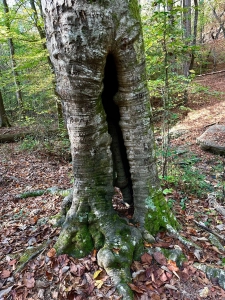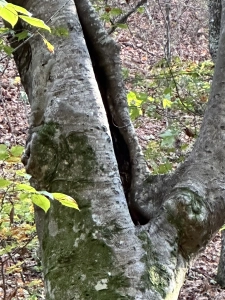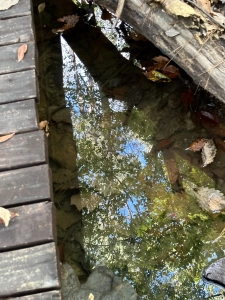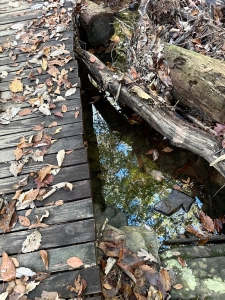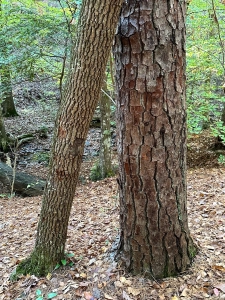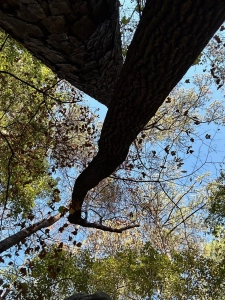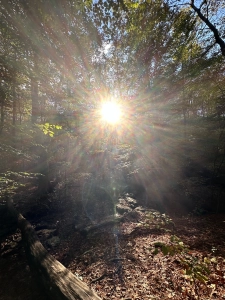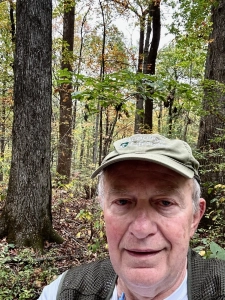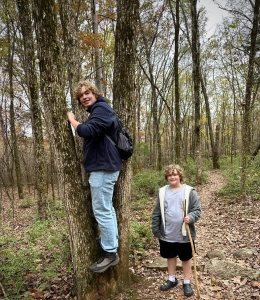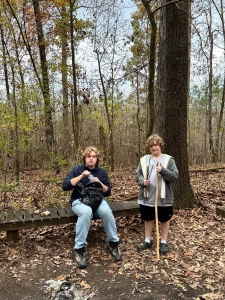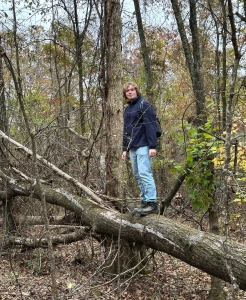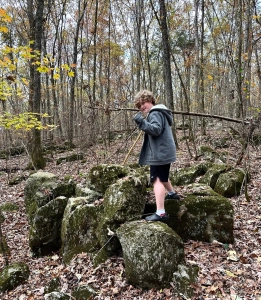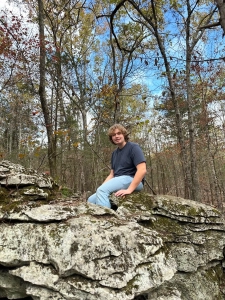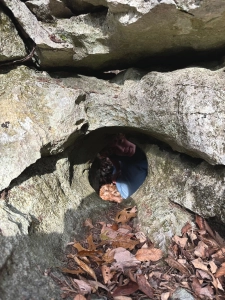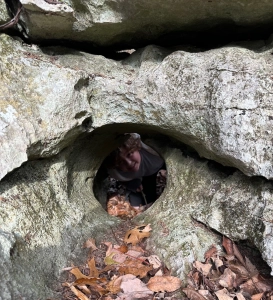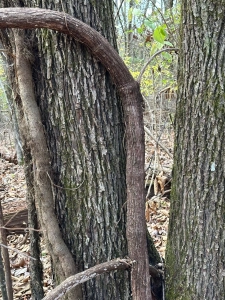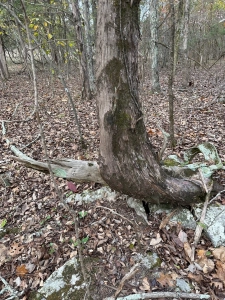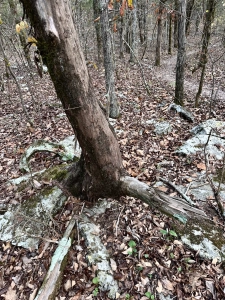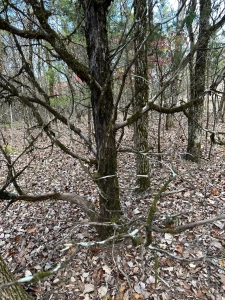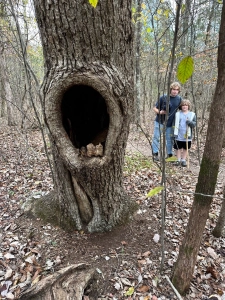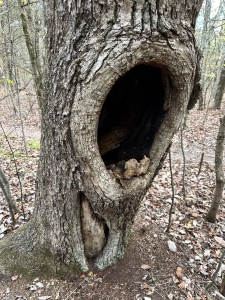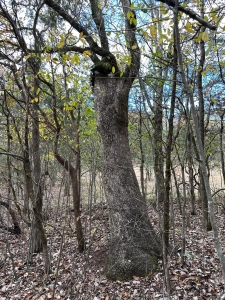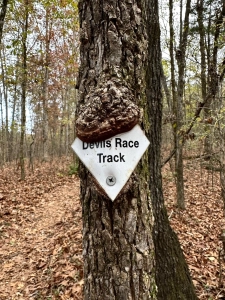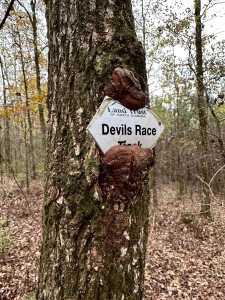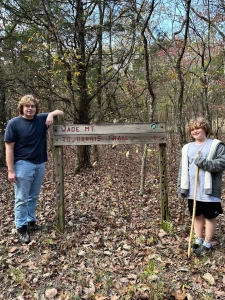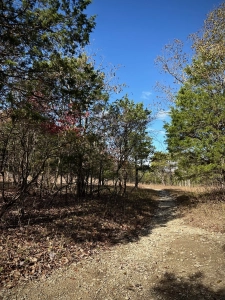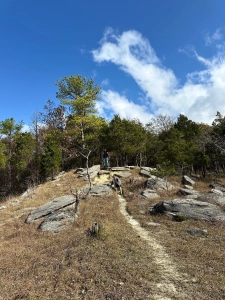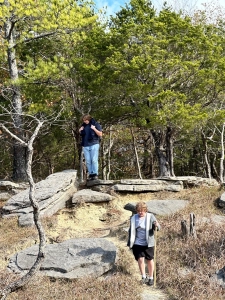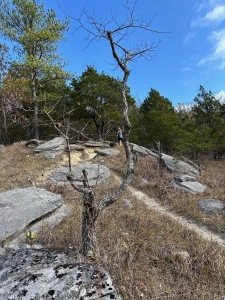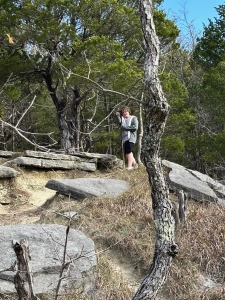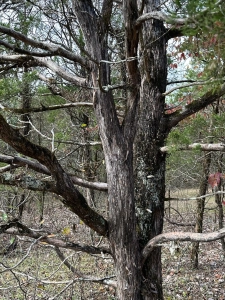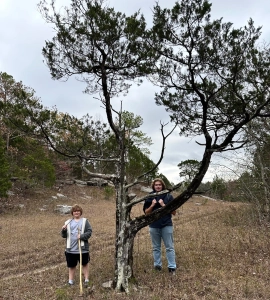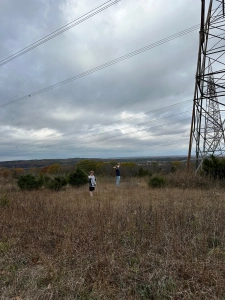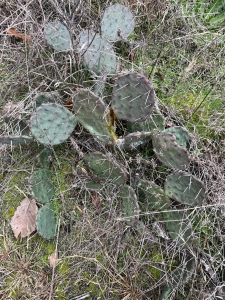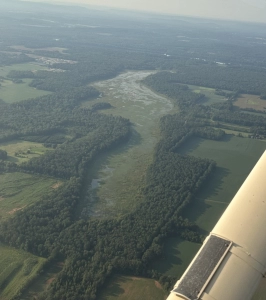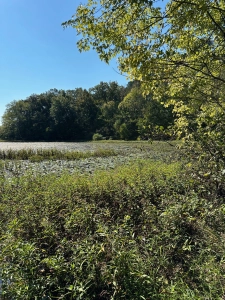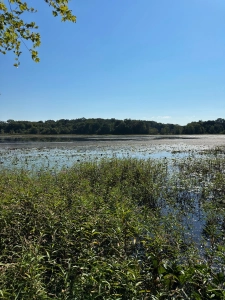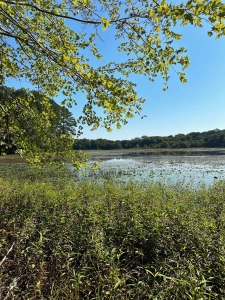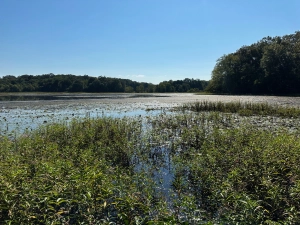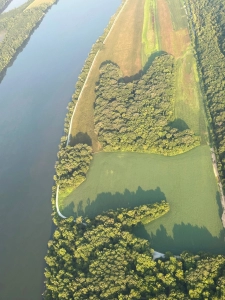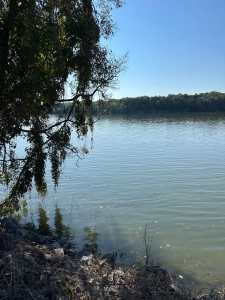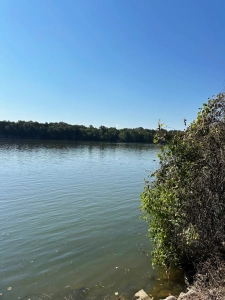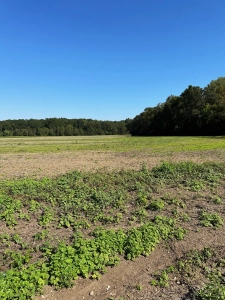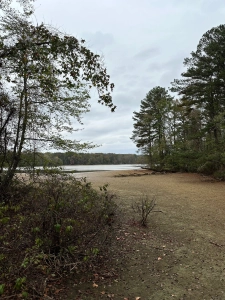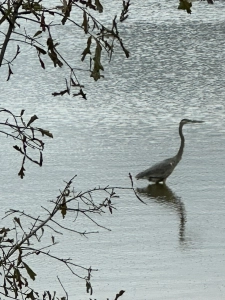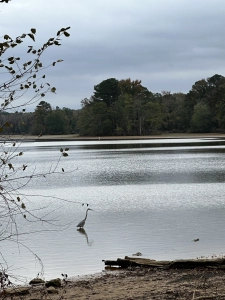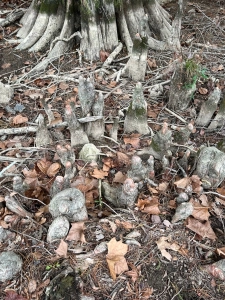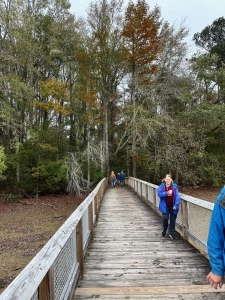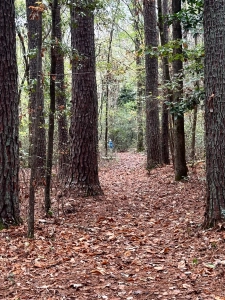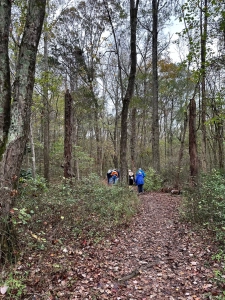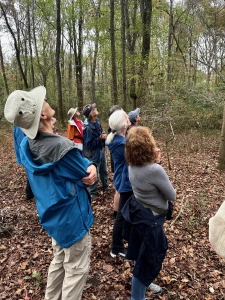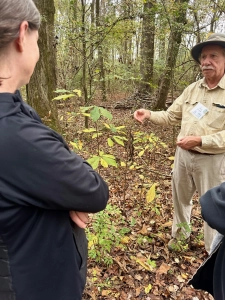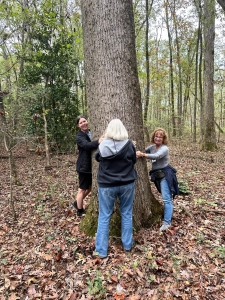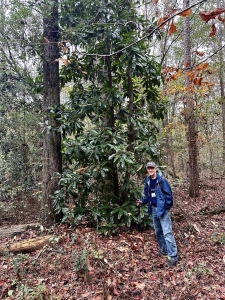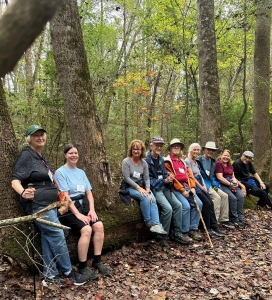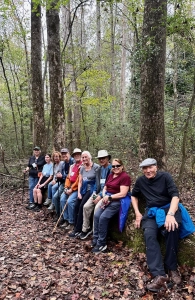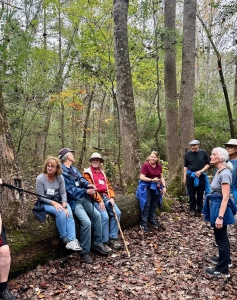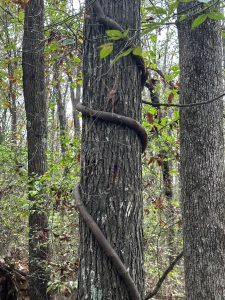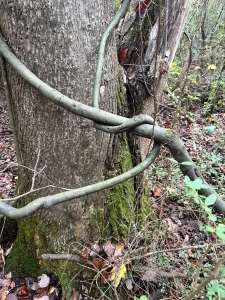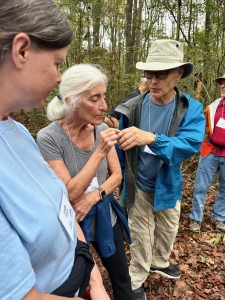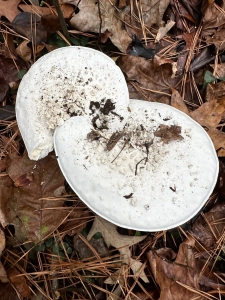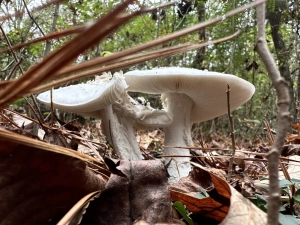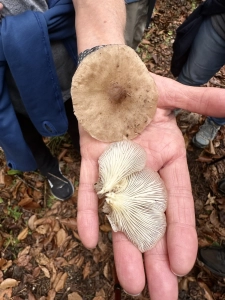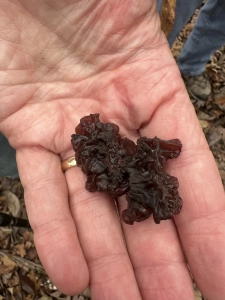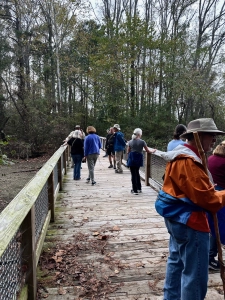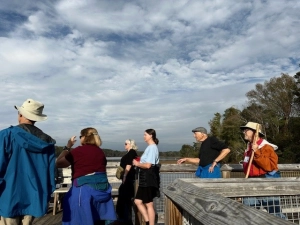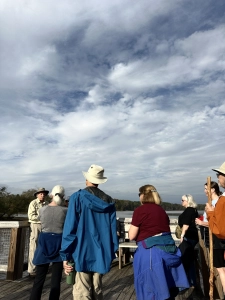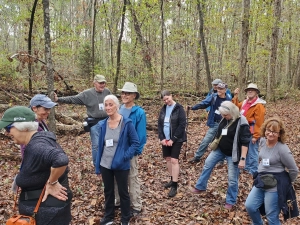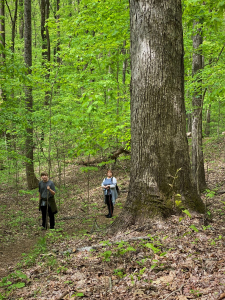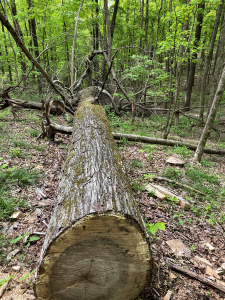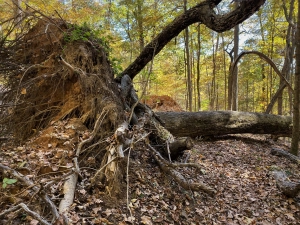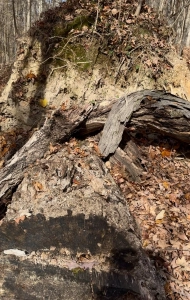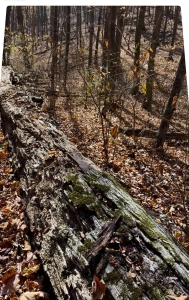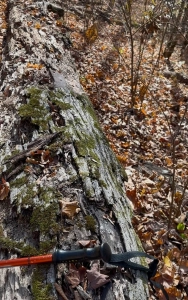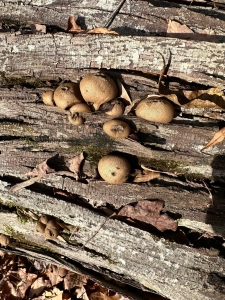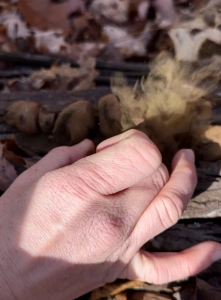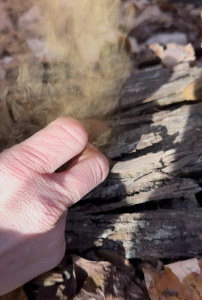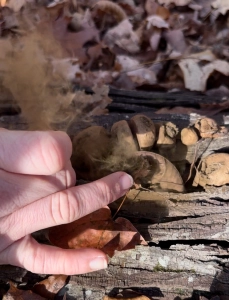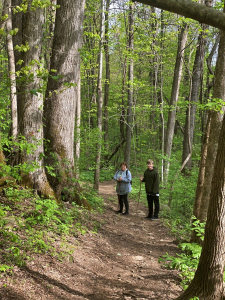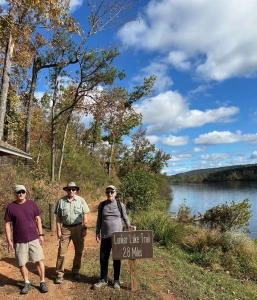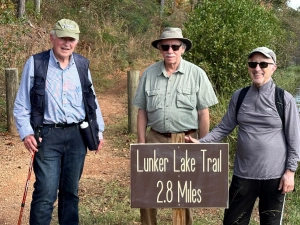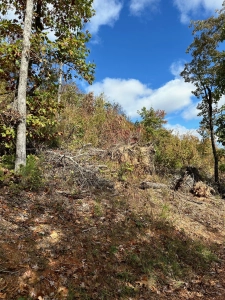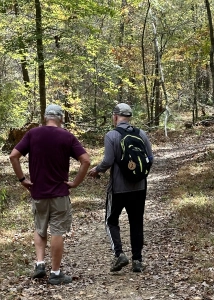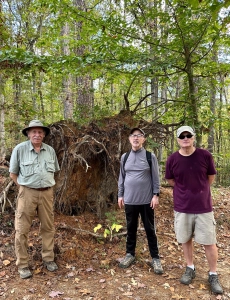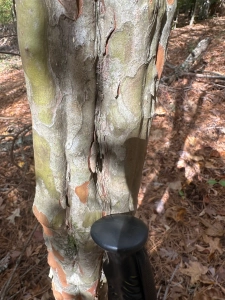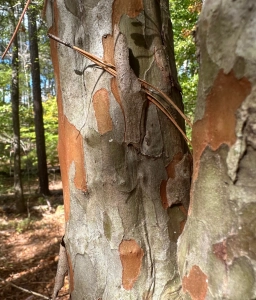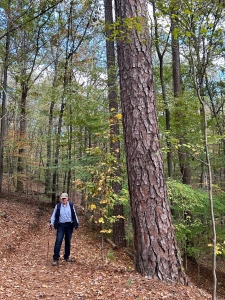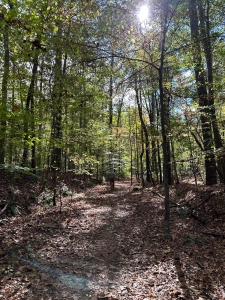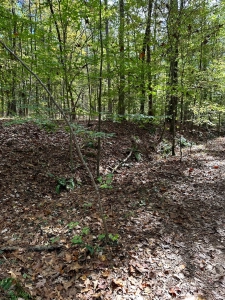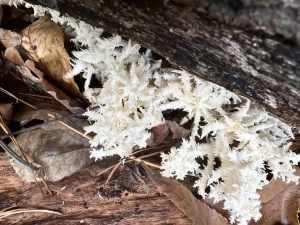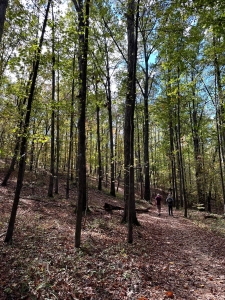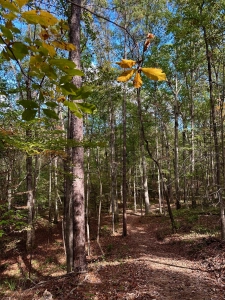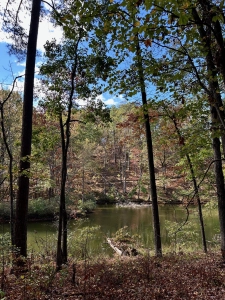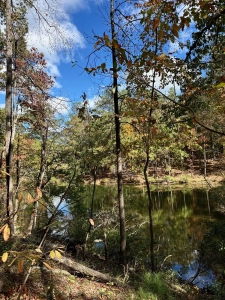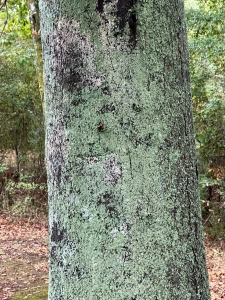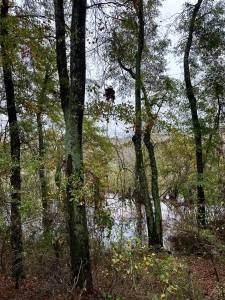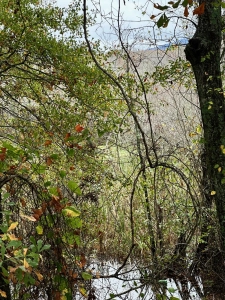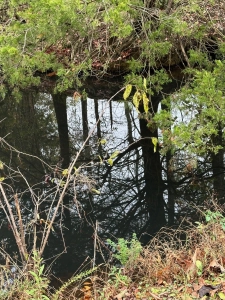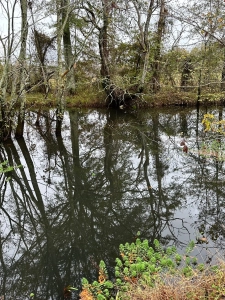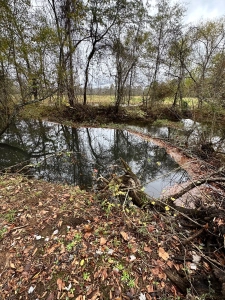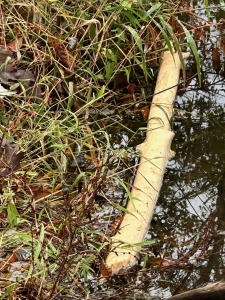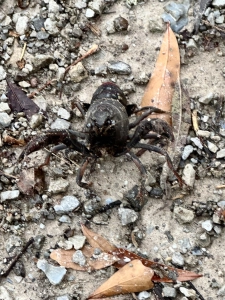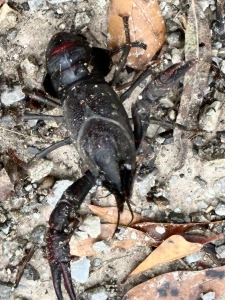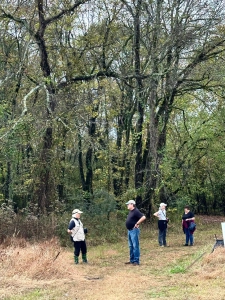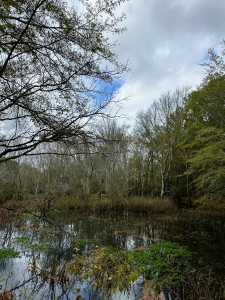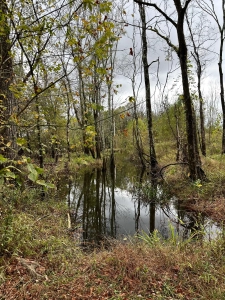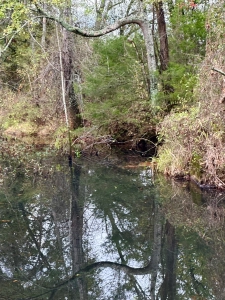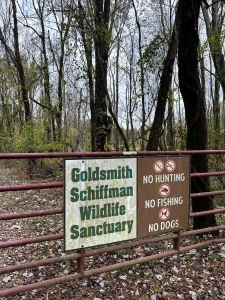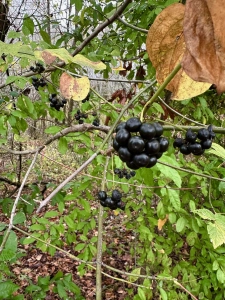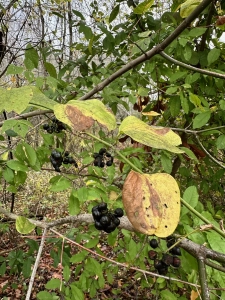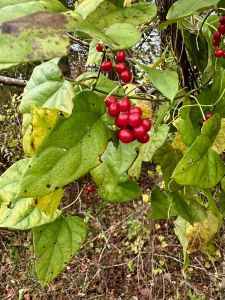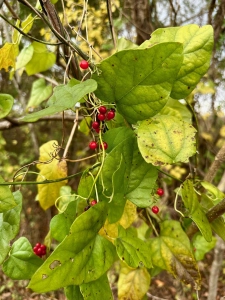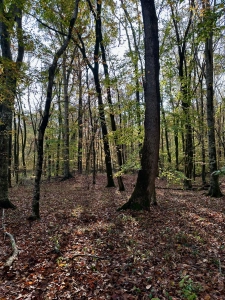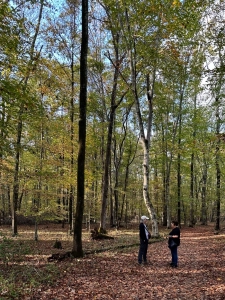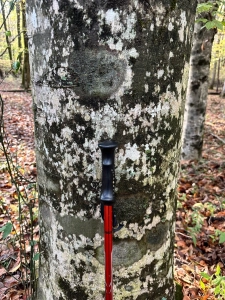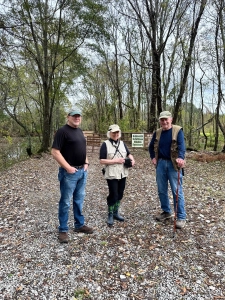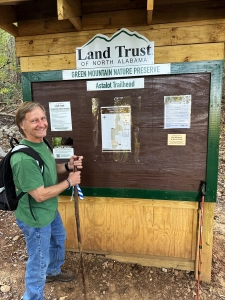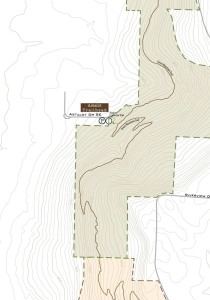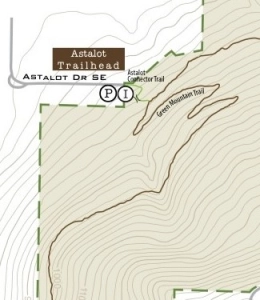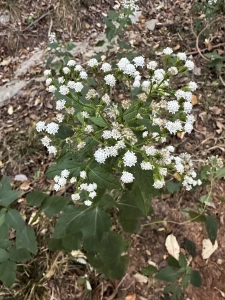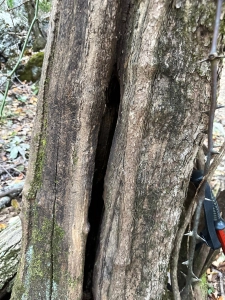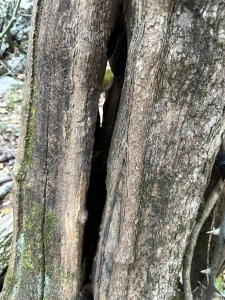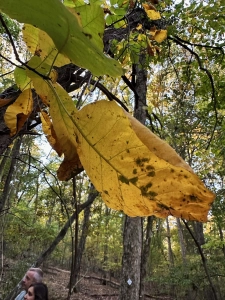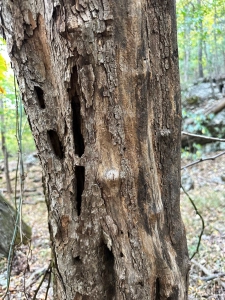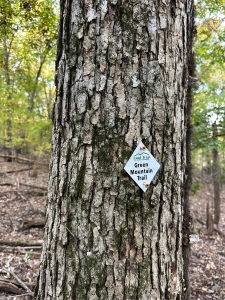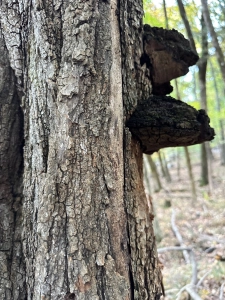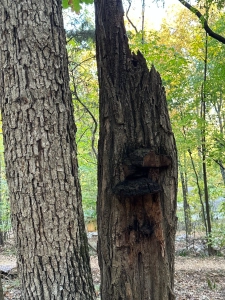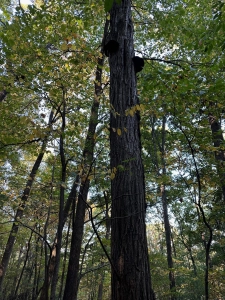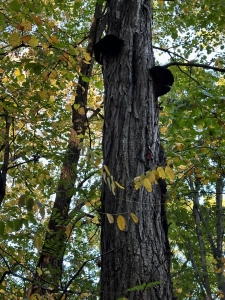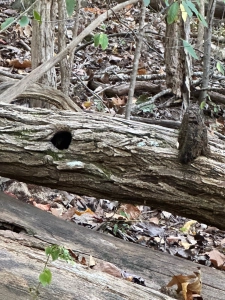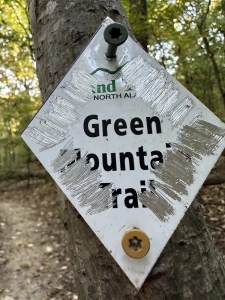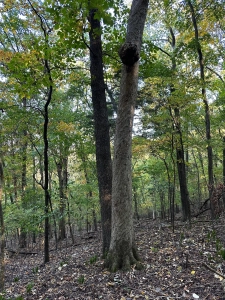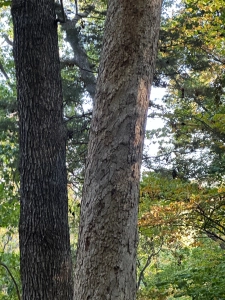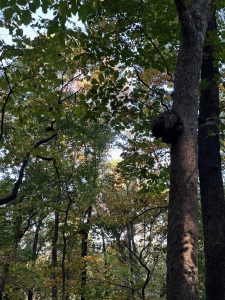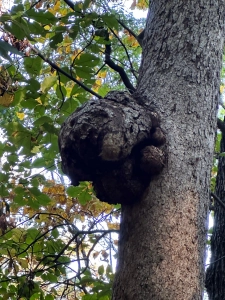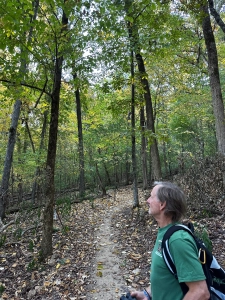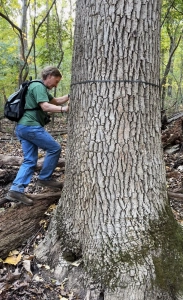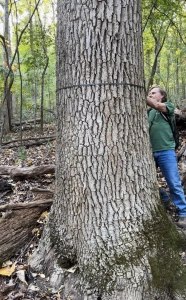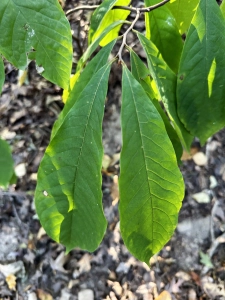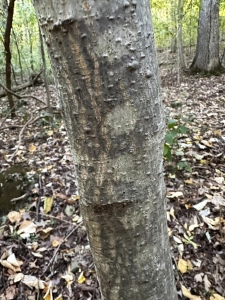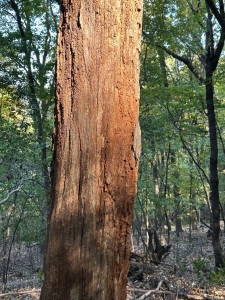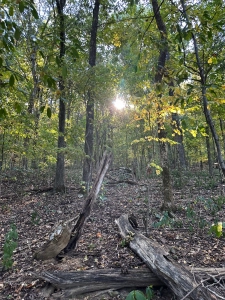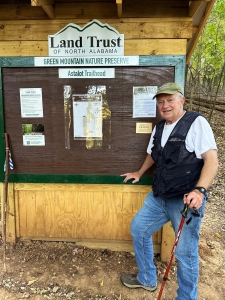Perfect Autumn Morning Hiking at Hickory Cove Nature Preserve
On November 23, 2024, fellow retired forester Chris Stuhlinger and I co-led an OLLI (Osher Lifelong Learning Institute, University of Alabama in Huntsville) hike at Hickory Cove Nature Preserve near Huntsville. Owned and managed by the Land Trust of North Alabama, the preserve encompasses 146 acres of second-growth hardwood forest, rocky ledges, wet weather springs and falls, and a historic spring house. I previously visited the preserve in late July 2024 (just before my total right knee replacement surgery) accompanied by my two Alabama grandsons (see my September 10, 2024, Great Blue Heron photo essay: https://stevejonesgbh.com/2024/09/10/trees-of-the-hickory-cove-nature-preserves-legacy-loop-trail/).
Because Chris and I designated this trek as a Hike, our pace did not accommodate the sauntering that John Muir insisted upon and that my photography, videoing, and observations required. As a result, I caught up with the group only occasionally when they paused and at the end! Once in a while, someone would lag with me. I valued their presence but am accustomed to and comfortable with solitary treks. The group hiked (I sauntered) the 1.75-mile Legacy Trail, a delightful forest exploration from 860 feet elevation to 1,010 and return. Come along with me as I offer observations, reflections, 19 photos, and four brief videos.
The deck overlooks an old stone spring house. Justust 100 feet dowstream a stone water trough engineered after decades to still collect and hold water to the brim. Autumn does not barge into north Alabama. Even within a week of December, the crowns are not yet bare. The spring houuse tells part of the land domestication tale. Somewhere nearby, the wooden residence and farm structures served by the spring house lay in ruins (ashes?). Perhaps closer inspection would reveal a long-abandoned and decaying still.
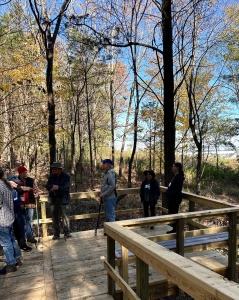
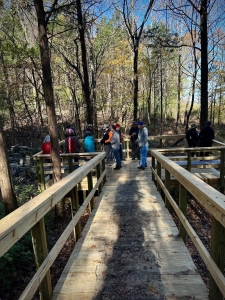
A sauntering pace permitted me to seek and spend a little time with tree form curiosities and oddities. This white oak spoke to me, “Slow down old forester. Pay attention. Ponder why I am so large, aged, and of coarse limb.” I heeded his request (was it a demand?). Evidence and hints within the forest suggested former attempted domestication, including roughland tillage and pasturing. The white oak is considerably older than the forest we traversed. It enjoyed many years open grown, its coarse branch stubs indicating that it did not mature within a tightly packed closed forest. Was it a shade tree at the old homestead or within a hillside pasture? On my next visit I will search for clues.
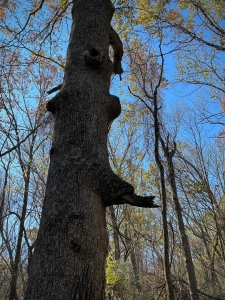
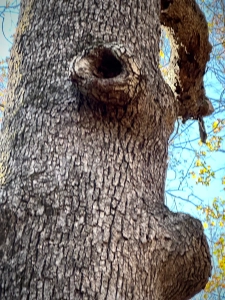
Woody vines, like this supplejack, are a component of the overstory canopy in most of our north Alabama second-growth forests. Birds drop gut-scarified seed among the brush of a new forest, and ride on the growing stems as the eventual tree winners ascended 60, 80, and 100 (or more) feet above. Most commonly I find wild grape (muscadine and scuppernong); supplejack and wisteria also find their way into the canopy by the same route. English ivy (not native) and Virginia creeper may also be present but seldomly reach beyond mid-canopy.
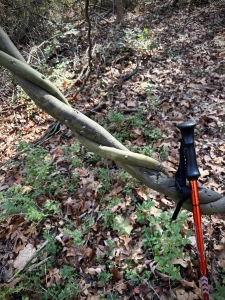
I like the smooth green bark of supplejack. An online source offers high praise for this native woody vine:
Supplejack is a plant that provides food for wildlife. Its fruits are high in calcium and are eaten by songbirds, wild turkey, northern bobwhite, raccoon, and gray squirrels. The plant supports local ecosystems without disrupting them.
I recorded this 52-second supplejack video:
Once in a while the sauntering old forester caught up with the hikers just in time for them, well rested, to resume their faster pace. Some stretches of the preserve’s forest were better stocked, supporting taller mixed upland hardwoods (at right) still holding fall foliage.

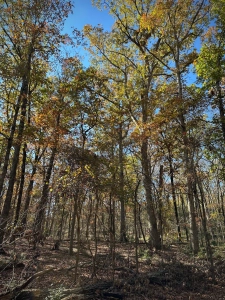
I recorded this 44-second video of the group resuming its quicker pace, leaving me once again to my business of gathering fodder for a photo essay.
Fallen, standing dead, and failing live Eastern red cedar throughout the preserve evidenced past land use. Cedar is a north Alabama pioneer species, one of the first woody plants to colonize abandoned fields and pastures, as well as cutover forestland. You’ve heard the familiar refrain — birds deposit the scarified seeds in emerging brush. The seed sprouts, the seedlings thrive in the sun-rich environment, cedar dominates the stand’s first three to four decades, and then cedar begins to fade as the surrounding longer-lived hardwoods persist.
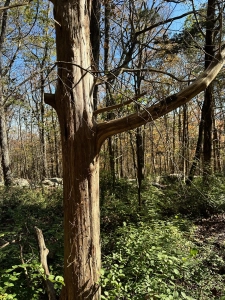
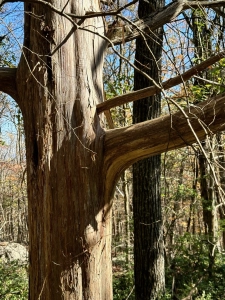
I recorded this 41-second video of the scrubby forest and a handsome ash tree, as a woodpecker tapped nearby:
I like the uniformly deeply furrowed pattern of green and white ash bark. Everything about the two species is regimented: the exceptional bark, the straight bole, and the species’ regal bearing and vertical posture. Ash trees remind me of the polished cadet corps at a military academy. In stark contrast, the shagbark trees are akin to a gathering of beach bums, their hair unkempt and their clothes and posture of little self-concern. The ash generates a glance of admiration and respect. The shagbark pulls me close for deep contemplation, whimsical imagination, and curiosity about the relative evolutionary advantages of the two forms.
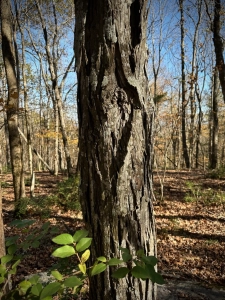
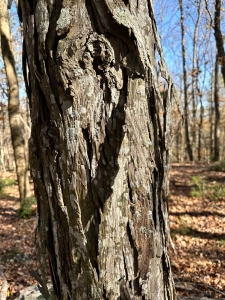
The questions and musings aren’t suited to the hiker; the burden of discovery and investigation falls to the saunterer.
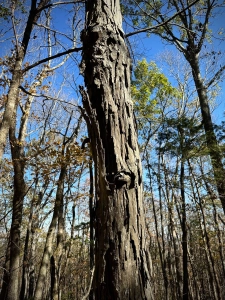
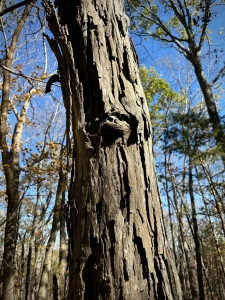
The group paused on the other side of a wooden bridge crossing a wet weather spring. Once again well rested, the group accepted my arrival as a trigger to resume their hiking.
Nearby, I recorded this 54-second video of two relicts (white oak and shagbark hickory) from a previous stand:
As with the white oak near the traihead, both of these indviduals bear coarse branching, large size, and a high crown ratio.
I discovered another tree form curiosity. A mockernut hickory stands within the grasp of a ground-forked sugar maple.
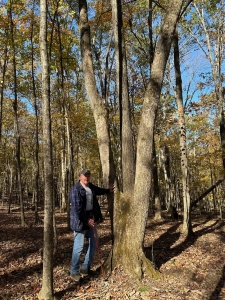
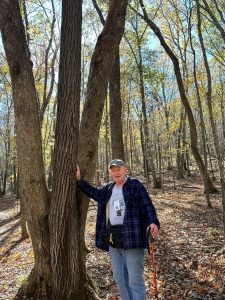
Will they prevail as a threesome? How intense is their competition for crown space (i.e. sunshine), soil moisture and nutrients, and even space for trunk expansion?
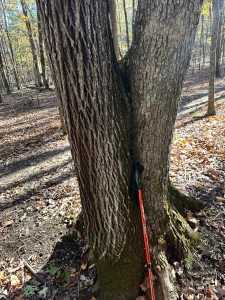
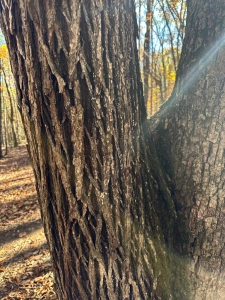
Although I have read some fanciful scientific recitations expounding on the wonderful and commonplace reciprocity, comensualism, and cooperation of Nature’s lifeforms, I resist such utopian scenarios. The sugar maple and hickory embrace above is not one of love and endearment. It’s one of coping with the unusual circumstance of both seeds germinating within a few inches and the two plants (the sugar maple I believe is a single forked tree) securing enough of life’s requirements to survuve for six to eight decades. They are engaged in fierce competition for those finite life resources. However, all three stems appear healthy; they are producing seed; their immediate future appears bright. I see no competitive advantage to such close proximity. I don’t anticipate out-living their proximal relationship. I can pledge only to spend more time with them on my next visit. Perhaps they will enlighten me in their own way.
I seldom compose my reflections and observations from these woodland rambles without generating more questions than answers. Rather than closing these pages with words of deep wisdom, I leave you with an image of pleasant woodland surroundings fitting for a late November midday…an invitation to return seeking insight and understanding from the forest. Every tree, every stand, and every forest have stories to tell. I’m still learning the language.
Thoughts and Reflections
I offer these observations:
- Questions and musings aren’t suited to the hiker; the burden of discovery and investigation falls to the saunterer.
- Every tree, every stand, and every forest have stories to tell. I’m still learning the language.
- Ash trees remind me of the polished cadet corps at a military academy. In stark contrast, the shagbark trees are akin to a gathering of beach bums, their hair unkempt and their clothes and posture of little self-concern.
Inhale and absorb Nature’s elixir. May Nature Inspire, Inform, and Reward you!
Note: Unless otherwise noted, all blog post images are created & photographed by Stephen B. Jones.
Please circulate images with photo credit: “©2025 Steve Jones, Great Blue Heron. All Rights Reserved.”
I am available for Nature-Inspired Speaking, Writing, and Consulting — contact me at steve.jones.0524@gmail.com
A reminder of my Personal and Professional Purpose, Passion, and Cause
If only more of us viewed our precious environment through the filters I employ. If only my mission and vision could be multiplied by untold orders of magnitude:
Mission: Employ writing and speaking to educate, inspire, and enable readers and listeners to understand, appreciate, and enjoy Nature… and accept and practice Earth Stewardship.
Vision:
- People of all ages will pay greater attention to and engage more regularly with Nature… and will accept and practice informed and responsible Earth Stewardship.
- They will see their relationship to our natural world with new eyes… and understand their Earth home more clearly.
Tagline/Motto: Steve (Great Blue Heron) encourages and seeks a better tomorrow through Nature-Inspired Living!
Steve’s Four Books
I wrote my books Nature Based Leadership (2016), Nature-Inspired Learning and Leading (2017), Weaned Seals and Snowy Summits: Stories of Passion for Place and Everyday Nature (2019; co-authored with Dr. Jennifer Wilhoit), and Dutton Land & Cattle: A Land Legacy Story (2023) to encourage all citizens to recognize and appreciate that every lesson for living, learning, serving, and leading is either written indelibly in or is powerfully inspired by Nature. All four of my books present compilations of personal experiences expressing my deep passion for Nature. All four books offer observations and reflections on my relationship with the natural world… and the broader implications for society. Order any from your local indie bookstore, or find them on IndieBound or other online sources such as Amazon and LifeRich.
I began writing books and Posts for several reasons:
- I love hiking and exploring Nature
- I see images I want to (and do) capture with my trusty iPhone camera
- I enjoy explaining those images — an educator at heart
- I don’t play golf!
- I do love writing — it’s the hobby I never needed when my career consumed me
- Judy suggested my writing is in large measure my legacy to our two kids, our five grandkids, and all the unborn generations beyond
- And finally, perhaps my books and Blogs could reach beyond family and touch a few other lives… sow some seeds for the future
